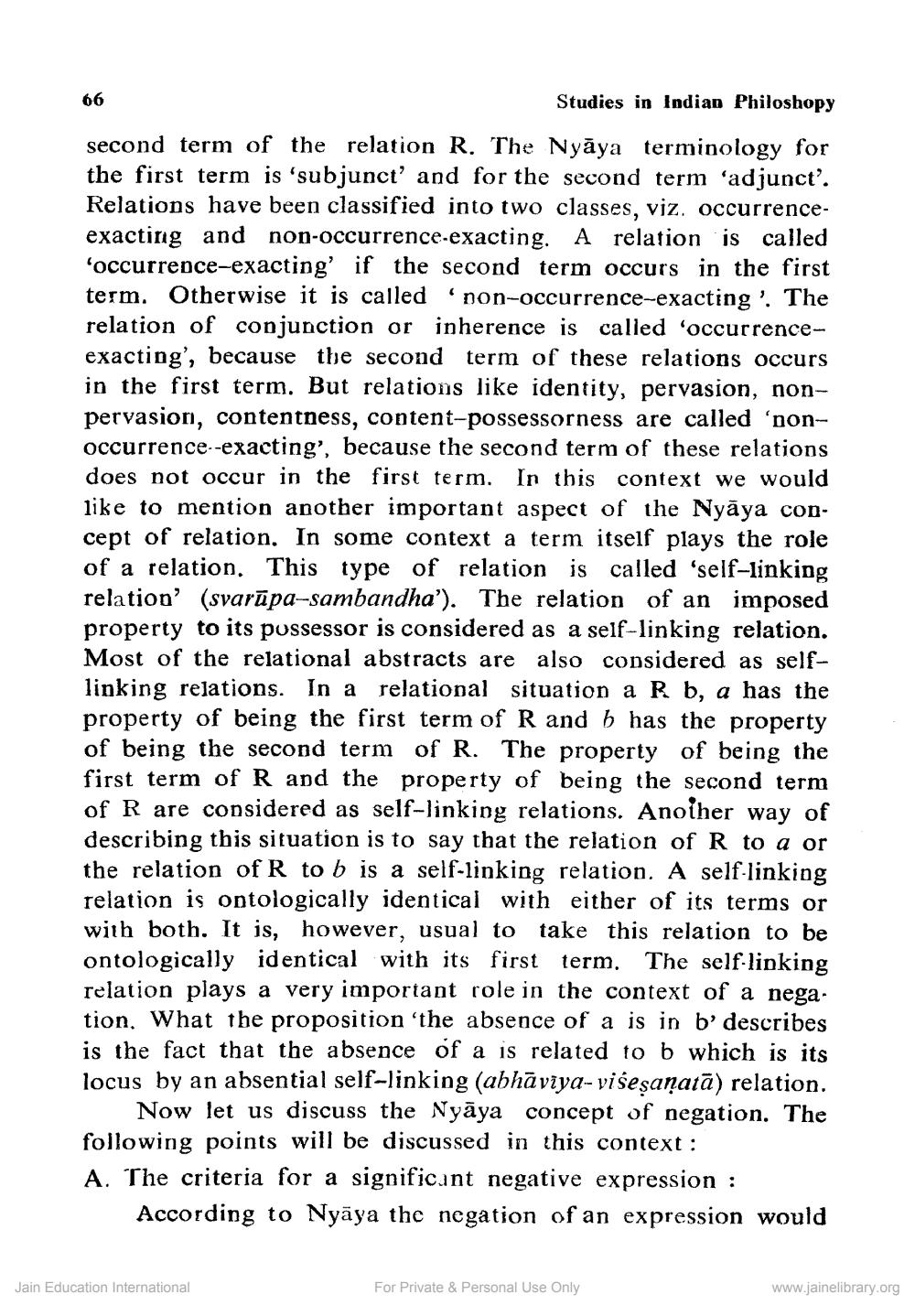________________
66
Studies in Indian Philoshopy
second term of the relation R. The Nyāya terminology for the first term is 'subjunct and for the second term 'adjunct'. Relations have been classified into two classes, viz. occurrenceexacting and non-occurrence-exacting. A relation is called 'occurrence-exacting if the second term occurs in the first term. Otherwise it is called 'non-occurrence-exacting! The relation of conjunction or inherence is called 'occurrenceexacting', because the second term of these relations occurs in the first term. But relations like identity, pervasion, nonpervasion, contentness, content-possessorness are called 'nonoccurrence--exacting’, because the second term of these relations does not occur in the first term. In this context we would like to mention another important aspect of the Nyāya concept of relation. In some context a term itself plays the role of a relation. This type of relation is called 'self-linking relation' (svarūpa--sambandha'). The relation of an imposed property to its pussessor is considered as a self-linking relation. Most of the relational abstracts are also considered as selflinking relations. In a relational situation a Rb, a has the property of being the first term of R and b has the property of being the second term of R. The property of being the first term of R and the property of being the second term of R are considered as self-linking relations. Another way of describing this situation is to say that the relation of R to a or the relation of R to b is a self-linking relation. A self-linking relation is ontologically identical with either of its terms or with both. It is, however, usual to take this relation to be ontologically identical with its first term. The self-linking relation plays a very important role in the context of a negation. What the proposition 'the absence of a is in b'describes is the fact that the absence of a is related to b which is its locus by an absential self-linking (abhāviya-visesanatā) relation.
Now let us discuss the Nyāya concept of negation. The following points will be discussed in this context : A. The criteria for a significant negative expression :
According to Nyāya the negation of an expression would
Jain Education International
For Private & Personal Use Only
www.jainelibrary.org




